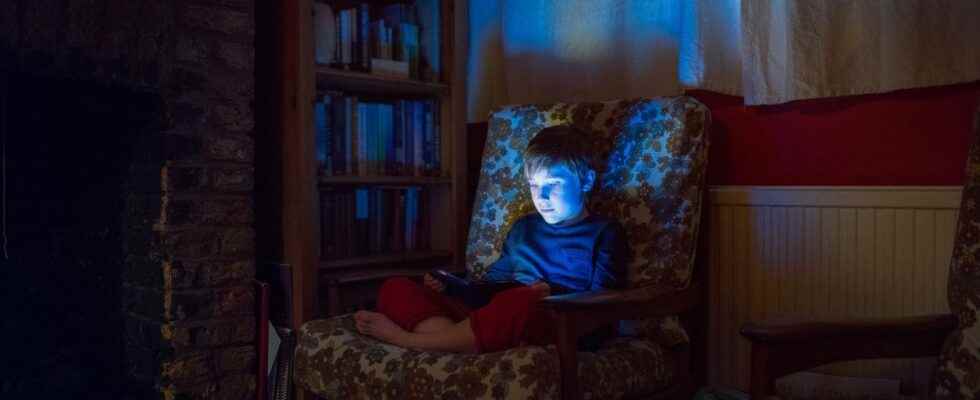Published on
Updated
Reading 2 mins.
As evidence accumulates confirming the harmful effects of screen light on the brains of children and adolescents, the National Academy of Medicine advocates the wearing of anti-blue light glasses on a daily basis.
Omnipresent, screens are part of our daily life and very often that of our children. As such, their use can be beneficial if it is framed by rules and interaction with parents. Nevertheless, according to numerous studies, the nature of the light generated by these screens is a new health problem that affects the eye as well as the brain of young users. An adaptation in the light of these data would make it possible to better manage the problem and avoid complications.
Toxic effects on the eye of children
Under the screens of computers and tablets, even educational ones, there are light-emitting diodes (LEDs), “sources of glare and phototoxic for the retina”, indicates the Academy of Medicine, which recalls that exposure to screens induces photochemical cell damage that is particularly harmful to the macular retina. This retina is nevertheless precious: it is what allows reading, writing and colored vision.
The sages also recall that the impact intensifies in the evening or at night because it inhibits the nocturnal physiological regeneration of retinal photopigments. These pigments are consumed during the day to initiate vision, and regenerated at night in the dark. Exposing yourself to the light of screens in the dark prevents proper functioning… Of their eyes, especially since children’s lenses are very translucent.
A disturbance on the brain and the internal clock as well
Strong exposure to light from screens also acts on the internal clock that regulates our 24-hour cycle. It adapts naturally and genetically to the alternations between sleep and light and darkness.
However, chronic exposure to light during the night, in particular blue light from screens (smartphones, tablets, computers), affects the sleep-wakefulness rhythm to lead to a desynchronization of the internal clock. A problem encountered particularly among at least 30% of adolescents, who sometimes use their screens late at night to communicate with each other. The imbalance causes both late sleep, increased vigilance, inhibition of melatonin secretion, involved in falling asleep.
By domino effect, according to a French study, 26% of middle school students and 43% of high school students have a sleep debt, inducing fatigue, impaired learning abilities, drop in school results that can go as far as academic delay. Added to this are mood disorders, hyperactivity, even metabolic disturbances (overweight, etc.) linked to physical inactivity induced by screens.
Simple recommendations to reduce the effects of light from screens.
“Given the size of the population concerned and the resulting pathologies, the chronic exposure of children and adolescents to light from screens at night is a public health problem”announces the National Academy of Medicine.
However, simple gestures and habits can counteract the harmful effects of blue lights, the sages conclude with 5 recommendations for use:
- Promote the use of protective glasses against blue light, in case of prolonged exposure to screens;
- Restrict, or even ban, the use of screens at night;
- Ensure the regularity of bedtimes and wake-up times for children and adolescents to avoid desynchronization of the internal clock;
- Introduce, in the school curriculum, raising students’ awareness of the risks associated with screens and the importance of sleep;
- Raise parents’ awareness of the risks associated with the misuse of screens; the decline in school performance and the withdrawal into oneself of their children being two essential warning signals to which they must be attentive.
